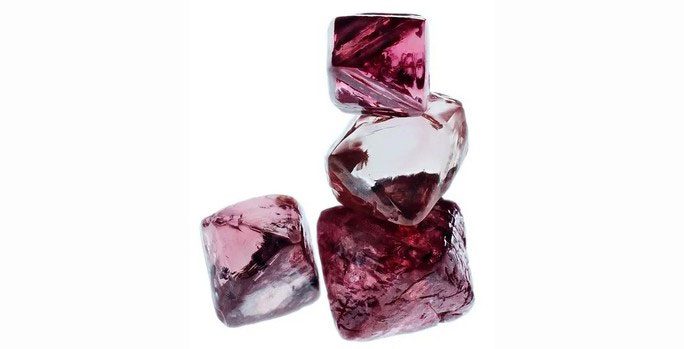The Argyle Formation in Australia, which holds 90% of the world’s pink diamonds, has recently revealed stunning secrets related to the lost supercontinent Nuna.
A study led by Dr. Hugo Olierook from Curtin University (Australia) has uncovered the origins of the enormous pink diamond deposits in the Argyle Formation, as well as various other types of colored diamonds around the globe.
This discovery stems from an extremely catastrophic event: the splitting of the planet’s surface, in a large, long-lasting, and continuous process known as “plate tectonics.”

Various shades of pink diamonds in the Argyle Formation, Australia – (Photo: Murray Rayner).
According to Live Science, pink diamonds are distinct from regular diamonds as well as blue or yellow diamonds, which derive their color from nitrogen or boron impurities. The mystical pink hue is due to the bending of the crystal structure. Some stones from Argyle even exhibit a blood-red color due to severe deformation of the crystals.
This deformation has allowed scientists to trace back to a tectonic event that occurred approximately 1.3 billion years ago, when Australia was part of a supercontinent known as Nuna.
The breakup of supercontinents is caused by the movement of tectonic plates beneath them, pulling along the continental and oceanic portions they “carry” above, leading to separation or amalgamation.
Tectonic plates can be roughly understood as pieces of the Earth’s crust. Therefore, the disintegration of a continent fundamentally originates from disturbances deep within the planet.
According to the new research, it was this ripping apart of the planet’s crust that brought pink diamonds from depths of hundreds of kilometers to the surface. This also explains why the pink diamond deposit in Australia is located at the edge of the continent—exactly where the ancient rift that split Nuna occurred.
All these upheavals paint a complete picture of the unique birth of this diamond treasure: 1.8 billion years ago, two pieces of the Earth’s crust carrying the continent collided as part of the formation of Nuna, subjecting the diamonds within to immense pressure that deformed the crystals, creating their beautiful pink color.
500 million years later, Nuna broke apart, and the materials that had just been forged during the continent’s formation were explosively thrust to the surface due to the dramatic splitting. This entire eruption of deep rock mixed with diamonds lasted only a few days or weeks.
The new findings not only reveal the extremely valuable origins of Australia’s pink diamonds but also add an important piece to the still-mysterious puzzle of plate tectonics, a process that, while daunting, is one of the crucial factors in stabilizing the atmosphere and magnetosphere, allowing life to emerge, evolve, and be protected.


















































